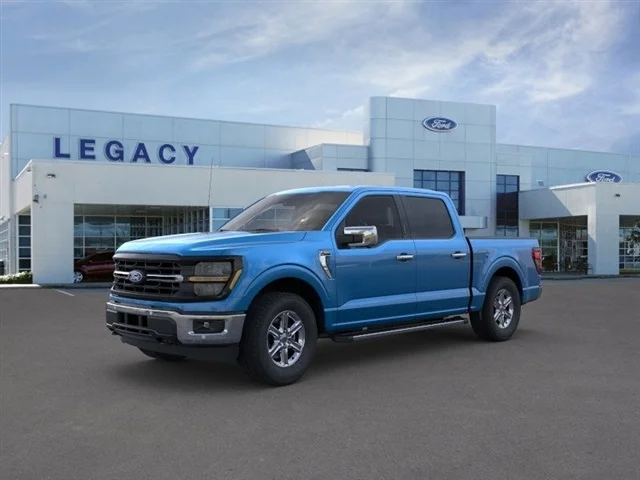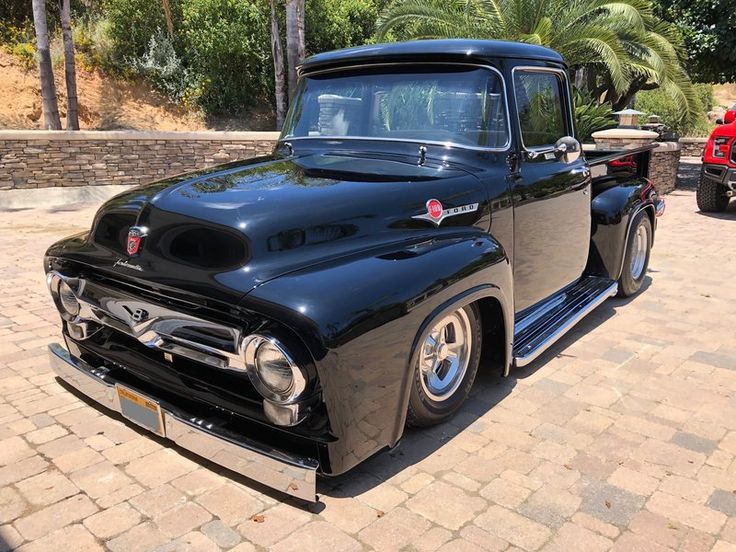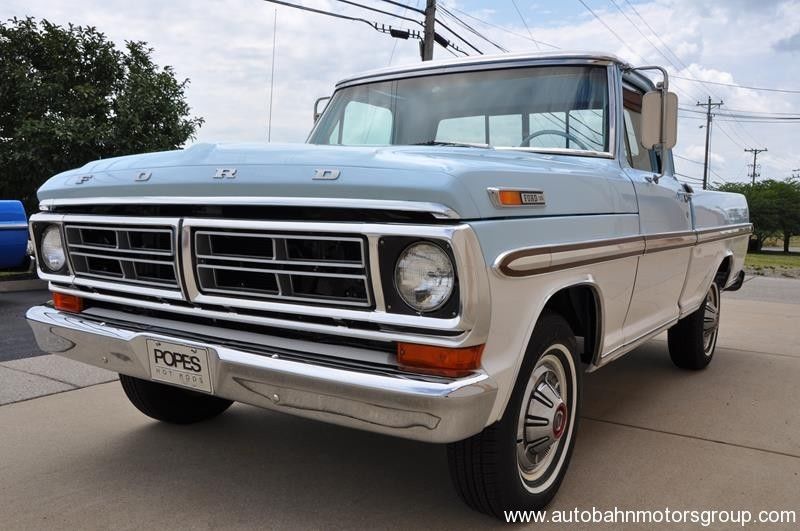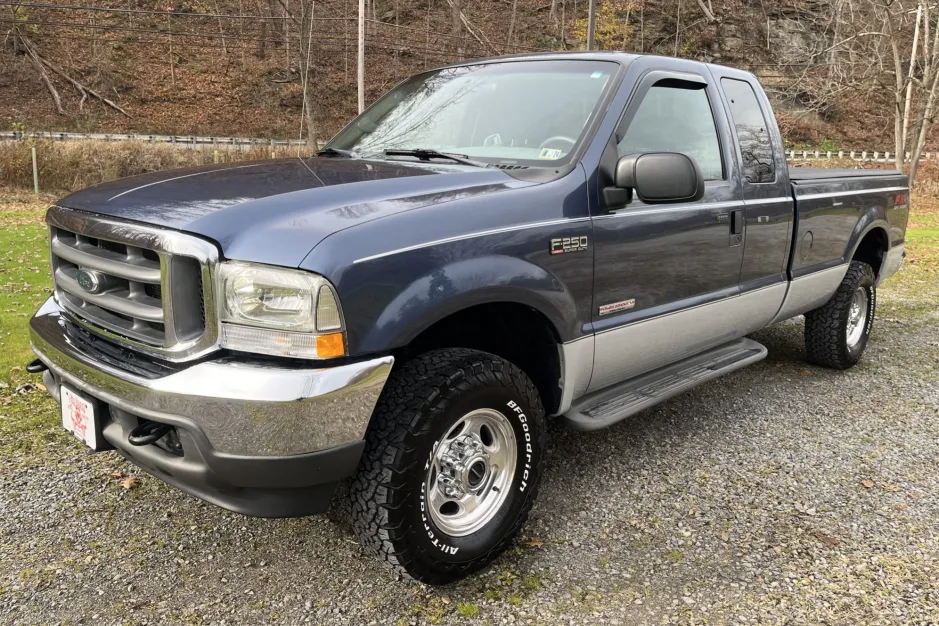Picture this: a dusty road winding through the heartland, a weathered rancher leaning against a bright red 1953 Ford F-100, a symbol of rugged dependability and a day’s hard work. This image, deeply ingrained in American culture, is just a glimpse into the remarkable story of Ford trucks. For over a century, these workhorses have hauled cargo, helped build a nation, and captured the hearts of countless drivers.
The Ford truck history is a testament to American ingenuity and a relentless pursuit of innovation. From humble beginnings as a utilitarian work truck to the high-tech marvels we see today, the evolution of Ford trucks mirrors the transformation of the American automotive industry.
In this deep dive, we’ll journey through the key eras and models that have shaped the Ford truck legacy. We’ll begin with the early 20th century, exploring the pioneering Model TT and the classic F-Series trucks that became synonymous with American values. We’ll then delve into the modern era, where Ford trucks have continued to push boundaries with groundbreaking technologies and features.
The Early Years: Laying the Foundation for the Ford Truck Legacy
The Ford truck history begins not with a pickup, but with the utilitarian Model TT. Introduced in 1917, the Model TT was Ford’s first purpose-built truck, a rugged workhorse designed for commercial use. It was essentially a modified Model T car chassis, equipped with a more robust frame, a heavier rear axle, and stronger springs to handle payloads of up to one ton. While rudimentary by today’s standards, the Model TT represented a significant step forward, demonstrating Ford’s commitment to providing practical transportation solutions for businesses and farmers.

The Model TT quickly gained popularity, proving its worth on farms, construction sites, and delivery routes across the country. Its success paved the way for the introduction of the Model AA in 1928, a larger and more powerful truck that could carry heavier loads. The Model AA came in various configurations, including panel trucks, stake trucks, and even buses, further expanding Ford’s reach into the commercial vehicle market.
Weathering the Storm: Early Ford Trucks and the Great Depression
The onset of the Great Depression in 1929 posed a significant challenge for the entire automotive industry. However, Ford trucks, particularly the early Ford trucks like the Model AA, managed to weather the economic storm due to their reputation for durability, affordability, and versatility. Farmers and businesses relied on these dependable vehicles to keep their operations running, even in the face of financial hardship. The Model AA, in particular, proved to be a lifeline for many during this difficult time, providing a reliable means of transportation and hauling goods.
Ford’s commitment to innovation continued throughout the Depression era. In 1932, the company introduced the first V8 engine in a pickup truck, a groundbreaking innovation that would become a hallmark of Ford trucks for decades to come. The V8 engine provided increased power and performance, making Ford trucks even more appealing to customers who needed a reliable and capable work vehicle.
Post-War Boom: Building America with Ford Trucks
The end of World War II marked a turning point for Ford trucks, as they played a crucial role in the rebuilding of America. With a renewed focus on infrastructure and economic growth, there was a surging demand for reliable trucks that could haul materials, transport goods, and support various industries. Ford was ready to meet this demand with its expanding lineup of trucks, including the newly introduced F-Series.
The first-generation F-Series, launched in 1948, marked the beginning of a legendary lineage that continues to this day. The F-Series trucks were designed to be versatile, durable, and comfortable, offering a wide range of options to suit different needs. They quickly became a favorite among farmers, ranchers, construction workers, and businesses of all sizes.
As the post-war boom continued, the early Ford trucks became increasingly popular, not just as work vehicles but also as personal transportation. Their ruggedness, reliability, and growing reputation for quality made them a symbol of American ingenuity and the spirit of hard work. This shift marked the beginning of the pickup truck culture that would flourish in the decades to come, with Ford trucks at the forefront.
The early Ford trucks laid the foundation for the brand’s enduring success. The Model TT and Model AA proved that Ford could build tough, dependable trucks that could handle the demands of the real world. The Great Depression tested the resilience of Ford trucks, but they emerged stronger than ever, proving their worth during a time of economic hardship. The post-war boom propelled classic Ford trucks into the mainstream, establishing them as an icon of American culture and a driving force behind the nation’s growth.
The Classic Era: Icons of American Roads and Workplaces
The post-war economic boom in America ushered in an era of optimism and prosperity, and the classic Ford trucks were ready to play a pivotal role. In 1948, Ford unveiled the first generation of the F-Series, a lineup that would soon become synonymous with the brand and revolutionize the Ford truck history. Initially available in eight weight ratings, from the half-ton F-1 to the F-8, the F-Series was designed with a clear focus on versatility, durability, and comfort. These trucks were not just workhorses; they were stylish, comfortable, and increasingly popular for personal use.
The Golden Age of Classic Ford Trucks: 1950s & 1960s

The 1950s and 1960s marked a golden age for classic Ford trucks. The F-Series continued to evolve, with new models and features being introduced regularly. The F-100, in particular, became an icon of American roads and workplaces. Its sleek design, powerful engines, and comfortable interior made it a favorite among both working professionals and everyday drivers.
During this era, Ford trucks started to transcend their utilitarian roots and become cultural symbols. They were featured in movies, television shows, and advertisements, further solidifying their place in the American imagination. The F-Series, with its bold grille, chrome accents, and distinctive body lines, embodied a sense of freedom, adventure, and the can-do spirit that defined the times.
The Rise of Pickup Truck Culture
The 1950s and 1960s also saw the rise of pickup truck culture, with Ford trucks at the forefront of this movement. No longer just work vehicles, pickups became lifestyle statements, a reflection of personal identity and a way to express individuality. This shift was fueled by a number of factors, including the growing popularity of outdoor activities, the emergence of suburban living, and the increasing availability of customization options.
The early Ford trucks, with their wide range of body styles, colors, and accessories, perfectly captured the spirit of this new pickup culture. They were seen as more than just transportation; they were a canvas for self-expression, a symbol of rugged individualism, and a way to connect with a community of like-minded enthusiasts.
The classic Ford trucks era cemented their place in American history. The F-Series, with its iconic models like the F-100, became synonymous with quality, durability, and style. The rise of pickup truck culture transformed these workhorses into cultural icons, beloved by generations of Americans for their versatility, practicality, and timeless appeal. As early Ford trucks continued to evolve, they remained true to their roots, reflecting the ingenuity, resilience, and independent spirit that define the American character.
The Modern Era: Innovation and Technology Drive Ford Trucks Forward
As the Ford truck history progressed into the modern era, the F-Series continued to evolve, adapting to the changing needs and demands of consumers. The 1970s and 1980s brought about significant shifts in the automotive landscape, with a growing emphasis on fuel efficiency and new design trends. Ford responded to these challenges by introducing a range of innovations that would reshape the F-Series and solidify its position as a leader in the pickup truck market.
1970s & 1980s: Fuel Efficiency and New Body Styles Reshape the F-Series

The oil crises of the 1970s led to a heightened awareness of fuel consumption, prompting automakers to develop more efficient vehicles. Ford rose to the occasion, introducing smaller, lighter-duty F-Series trucks with more fuel-efficient engines. The company also experimented with new body styles, such as the aerodynamically designed “Club Cab” introduced in 1974, which offered more interior space and improved fuel economy.
In the 1980s, Ford continued to innovate with the F-Series, introducing electronic fuel injection, which further improved fuel efficiency and performance. The company also introduced new body styles, such as the extended cab and crew cab, which offered more passenger space and comfort, further blurring the lines between work trucks and personal vehicles. This period marked a turning point in the Ford truck timeline, as the F-Series began to transition from a purely utilitarian vehicle to a versatile and stylish option for a wider range of consumers.
1990s & 2000s: The Introduction of the Super Duty Line and Luxury Trucks

The 1990s and 2000s saw a significant expansion of the Ford truck lineup with the introduction of the Super Duty line in 1999. These heavy-duty trucks were designed for the most demanding tasks, offering increased towing and hauling capabilities, as well as more powerful engines and robust chassis. The Super Duty line quickly became a favorite among those who needed a truck for serious work, further cementing Ford’s reputation for building tough, dependable vehicles.
In addition to the Super Duty line, Ford also began to focus on the luxury truck market, introducing the F-150 Lariat and King Ranch models, which offered premium features and amenities typically found in luxury cars. This move was a response to the growing demand for pickup trucks that could serve as both work vehicles and comfortable daily drivers. The Ford truck history of the 1990s and 2000s reflects a growing awareness of the diverse needs and preferences of truck owners, leading to a wider range of options and configurations.
21st Century: EcoBoost Engines, Aluminum Bodies, and Advanced Technology Redefine the Pickup Truck
The 21st century ushered in a new era of innovation for Ford trucks. The company introduced the EcoBoost engine in 2011, a turbocharged, direct-injection engine that offered both power and fuel efficiency. This groundbreaking technology allowed Ford trucks to deliver impressive performance while consuming less fuel, a combination that was previously thought to be impossible.
In 2015, Ford made another bold move by introducing an all-aluminum body for the F-150. This revolutionary design made the truck significantly lighter, which in turn improved fuel economy, handling, and acceleration. The use of aluminum also enhanced the truck’s durability and resistance to corrosion, further reinforcing Ford’s commitment to building tough, long-lasting vehicles.
The Ford truck timeline of the 21st century is characterized by a relentless pursuit of technological advancements. Ford trucks now come equipped with a host of advanced features, such as adaptive cruise control, lane departure warning, and blind spot monitoring, making them safer and easier to drive. Additionally, the company has been at the forefront of developing electric and hybrid trucks, such as the F-150 Lightning, which represents a major step towards a more sustainable future for the automotive industry.
The modern era of Ford trucks is a testament to the company’s dedication to innovation and its ability to adapt to changing times. From fuel-efficient engines and new body styles to groundbreaking technologies and advanced safety features, Ford trucks have consistently pushed the boundaries of what a pickup truck can be. As the Ford truck history continues to unfold, it’s clear that the company remains committed to building trucks that are not only tough and capable but also innovative, stylish, and environmentally responsible.
Ford Trucks Today: Leading the Pack in Capability and Performance
Drawing on a century-rich history of Ford trucks, the modern lineup continues to innovate and redefine what a truck can do. Today’s Ford trucks stand as a testament to the brand’s unwavering commitment to durability, performance, and cutting-edge technology. They are designed to not only meet the demands of work and play but to exceed them, pushing the boundaries of capability and reimagining the driving experience. The legacy of classic Ford trucks, known for their ruggedness and timeless appeal, is evident in the modern lineup, which seamlessly blends heritage with innovation.
Current F-Series Lineup: The Heartbeat of America’s Roads

The F-Series remains the heart and soul of Ford’s truck offerings, a diverse and comprehensive lineup catering to an incredibly wide range of needs. From the ever-popular F-150, a mainstay on American roads and worksites, to the brawny Super Duty models engineered for the toughest jobs, the F-Series offers a truck for every purpose and lifestyle, making it the best-selling vehicle in America for over four decades.
The F-150, the perennial favorite, boasts an impressive array of powerful yet efficient engines, from the 2.7L EcoBoost V6 to the robust 5.0L V8 and the all-new PowerBoost Hybrid, a full hybrid powertrain that combines power and efficiency. The F-150 isn’t just about power, though; it also prioritizes comfort and technology, with luxurious interiors featuring premium materials and spacious cabs offering ample room for passengers and cargo.
For those who demand even more from their truck, the Super Duty models—the F-250, F-350, and F-450—step up to the plate. These heavy-duty workhorses are designed to handle the most extreme towing and hauling tasks, equipped with high-torque Power Stroke® diesel engines and robust chassis engineered for maximum durability. They also offer advanced towing technologies like Pro Trailer Backup Assist and Trailer Reverse Guidance, making even the most challenging maneuvers a breeze.
Beyond the F-Series, Ford offers the versatile Ranger, a mid-size truck that strikes a balance between efficiency, maneuverability, and off-road capability. The Ranger is perfect for those who need a truck that can handle both city streets and rugged trails, with available features like the Terrain Management System™ and Trail Control™.
Rounding out the lineup is the Maverick, a compact truck designed for urban dwellers and those who prioritize fuel efficiency. Available with a standard hybrid powertrain, the Maverick delivers exceptional fuel economy without sacrificing capability or functionality. Its compact size makes it easy to maneuver in tight spaces, while its innovative Flexbed™ system offers versatile cargo solutions.
Cutting-Edge Features: Where Brawn Meets Brains
Ford trucks are renowned for their ruggedness and reliability, qualities that have been forged through a century of innovation and refinement. But today’s Ford trucks are more than just tough; they are also smart, incorporating the latest technology to enhance every aspect of the driving experience.
One such innovation is Pro Power Onboard, a game-changing feature that transforms the truck into a mobile generator. This onboard power source can be used to run tools, appliances, or even an entire campsite, providing unparalleled convenience and versatility.
Ford’s commitment to safety is evident in the Co-Pilot360 suite of advanced driver-assist technologies. These features, including automatic emergency braking, lane-keeping assist, and blind spot monitoring, work together to help drivers stay safe and confident on the road.
Inside the cabin, the SYNC 4 infotainment system offers seamless connectivity, intuitive voice commands, and access to a range of apps and services. The available BlueCruise hands-free driving technology takes highway driving to the next level, allowing drivers to relax and enjoy the journey.
The Future of Ford Trucks: Electrification and Beyond
As the history of Ford trucks demonstrates, innovation is at the core of the brand’s DNA. Ford is committed to leading the charge into the future with electric and autonomous technologies, reimagining the possibilities of what a truck can be.
The F-150 Lightning, an all-electric version of the iconic pickup truck, represents a major milestone in Ford’s electrification journey. With its impressive power, range, and innovative features like the Intelligent Backup Power system, the F-150 Lightning is poised to redefine the segment and accelerate the adoption of electric vehicles.
Beyond electrification, Ford is also investing in autonomous driving technology, exploring the potential to create trucks that can navigate roads and perform tasks with minimal human input. This could lead to significant advancements in safety, efficiency, and productivity, further solidifying Ford’s position as a leader in the automotive industry.
Conclusion
The Ford truck history is a captivating narrative of innovation, resilience, and the unwavering pursuit of excellence. From the humble beginnings of the Model TT to the technological marvels that define the F-Series today, Ford trucks have consistently pushed the boundaries of what’s possible in the automotive world. They have evolved alongside American society, reflecting the changing needs and aspirations of generations of drivers.
More than just workhorses, Ford trucks have become deeply ingrained in American culture, symbolizing the values of hard work, adventure, and the freedom of the open road. They have been featured in countless movies, TV shows, and songs, cementing their status as cultural icons. The F-150, in particular, has become a symbol of American pride and ingenuity, the best-selling vehicle in the country for over four decades.
The impact of these classic Ford trucks extends beyond the automotive industry. They have played a crucial role in shaping the American landscape, helping to build infrastructure, transport goods, and support countless businesses. They have also served as a source of inspiration for countless entrepreneurs, engineers, and designers, who have been driven to create their own groundbreaking innovations.
As we look to the future, the history of Ford trucks shows no signs of slowing down. With a focus on electrification, autonomous driving, and other cutting-edge technologies, Ford is poised to continue its legacy of innovation and redefine the future of transportation. The F-150 Lightning, an all-electric version of the iconic pickup, is a testament to this commitment, showcasing the company’s determination to build a more sustainable and connected future.
Ford trucks have come a long way since the early days of the Model TT, but one thing remains constant: their unwavering dedication to building tough, capable, and innovative vehicles that meet the needs of drivers around the world. As we celebrate the remarkable Ford truck history, we can look forward to a future where these iconic vehicles continue to evolve and inspire, leaving a lasting legacy for generations to come.